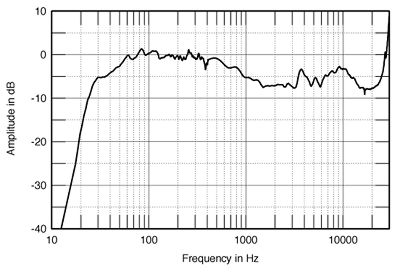I was able to audition this sexy speakers yesterday paired with my Parasound poweramp.
Hmmm. Initial impression... I think it's not match with my Parasound, too forward and bright for me.
In my opinion it's character is between RTi and previous LSi series when paired with my poweramp.
But still these are great sounding speakers. Mids and highs are clear and detailed. Those who are fond listening to female voices will love these new LSIMs. Also it excels in bass department. It can go quite deep that you can actually feel it 
For for now... Will try out this week for other options 
There are a lot of speakers out there to choose from. Just choose the ones that'd suit your preference.

Speakers voiced to measure near flat in terms of FR (like most speakers from Polk, Infinity, PSB, Focal, Wilson, Mordaunt-Short, Revel, etc.) tend to sound "forward" to people who aren't used to this character (this is partly a function of the Fletcher-Munson curve).
Men are particularly sensitive to midband harshness (especially elderly ones), which is why many prefer the sound of speakers (or systems) with a "gundry dip" -- or an attenuated response in the 6th to 7th octaves. Since the hifi audio market is dominated by adult men, many speakers are thus designed to appeal to the typical hearing preference of this demographic. The local hifi sound largely reflects this preference, and is quite different from the typical american/canadian hifi sound (which had been guided by their hifi press' emphasis on measured performance in the 70s and 80s).
To illustrate, these would likely be popular speakers to the typical Filipino enthusiast (and I've heard many coin the term "neutral" for such a response):


These are likely what many Filipinos might describe as bright, forward, shouty, clinical, sterile, tinny or brittle sounding speakers (when they are much closer to flat/neutral from objective measurements):


There really is nothing wrong with preferring one over the other (and I appreciate both kinds), as long as we don't use the former ones for mastering recordings as-is (unless we intend to make the recording sound good only on gear with a similar character). I prefer to use the terms pleasant, musical, sonorous, etc. for the prior curves, and neutral, flat, accurate, etc. for the latter curves.
Of course, frequency response is only one of the many factors that can affect the apparent performance of a speaker, but it typically is among the few that make the biggest impact. This is most evident in conventional HiFi systems, as most HiFi people are processing-averse. In typical Home Theater and Pro Audio environments, the response curves are often pre-equalized in the active domain.